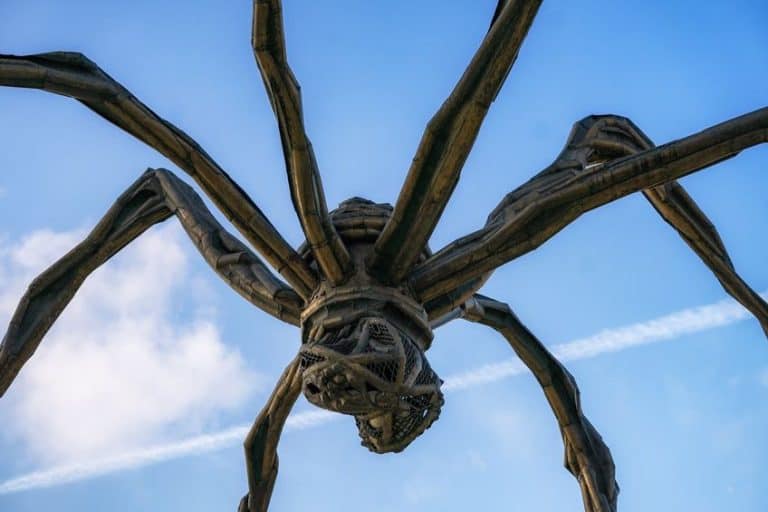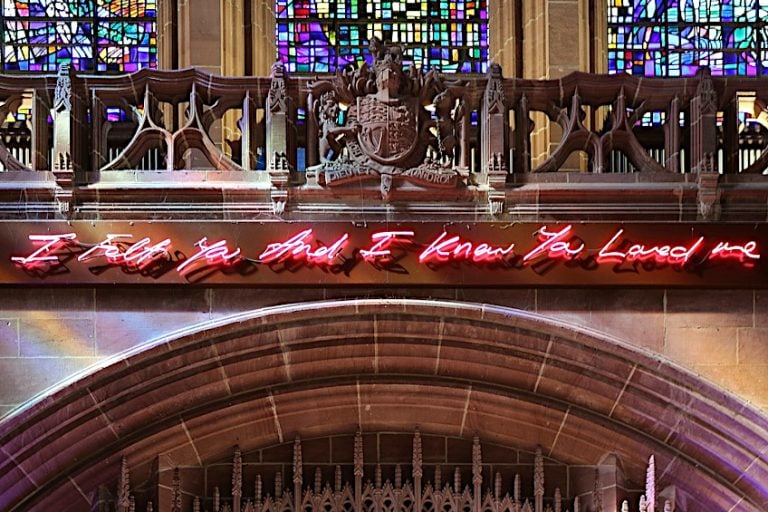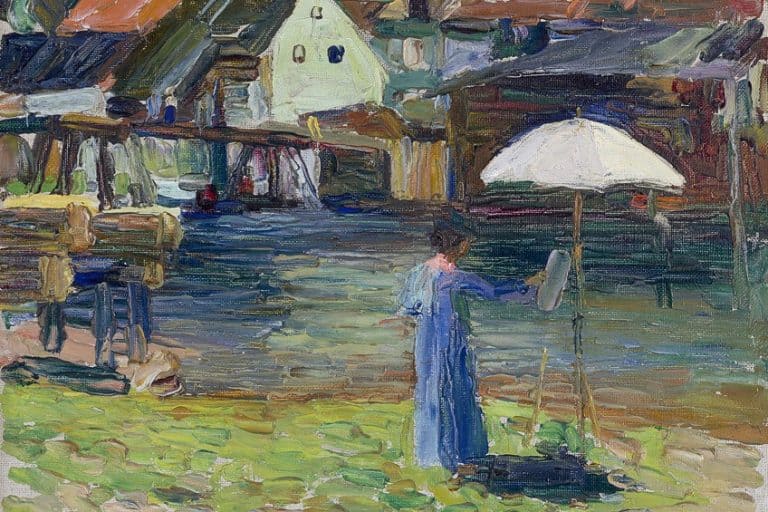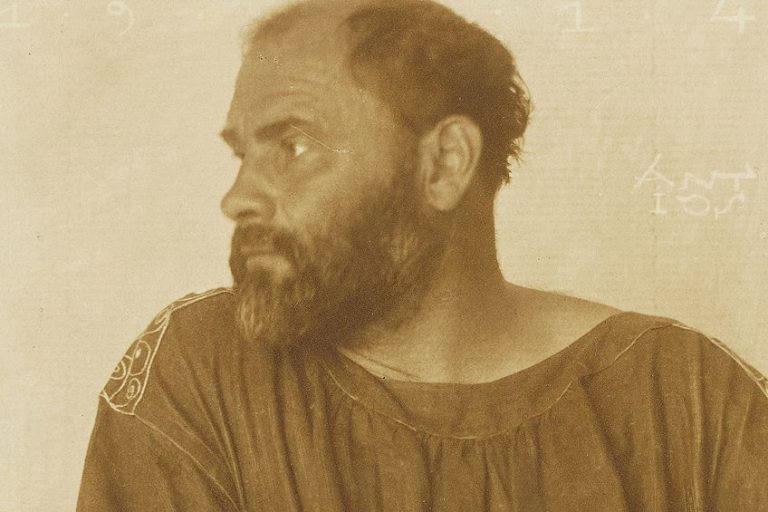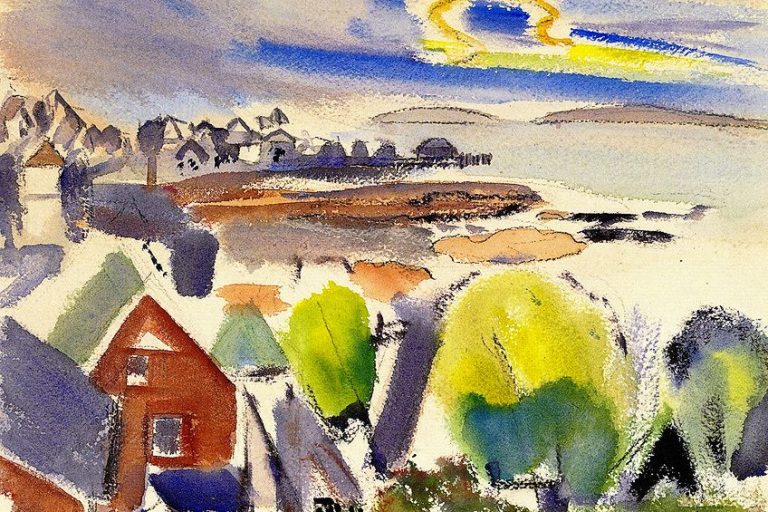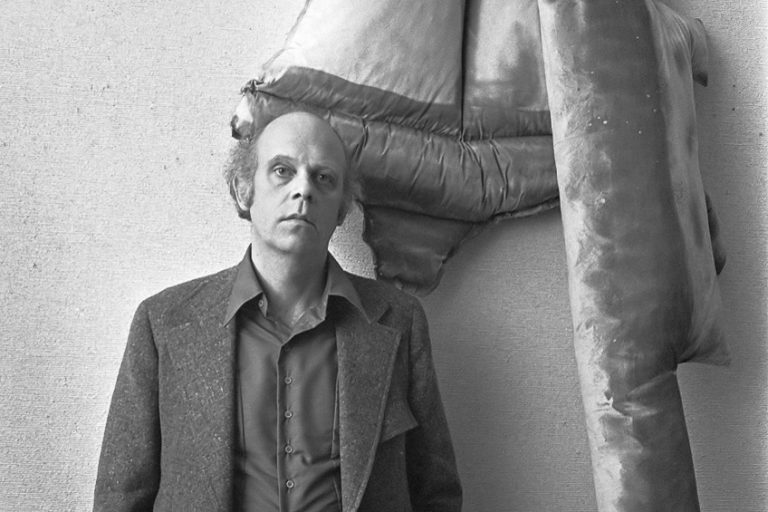Hunt Slonem – A Kaleidoscope of Color
Hunt Slonem is a contemporary American artist renowned for his vibrant and whimsical neo-expressionist works. Best known for his repetitive, richly textured portrayals of exotic birds, butterflies, and bunnies, Slonem’s art exudes a joyous exuberance that captivates viewers. His distinctive technique involves layering paint with cross-hatched patterns, creating a tactile, almost sculptural quality. Drawing inspiration from his extensive aviary and fascination with nature, Slonem’s pieces are characterized by their bold colors and intricate patterns, blending elements of Pop Art, Abstract Expressionism, and Surrealism. Over his prolific career, Slonem’s work has been exhibited in numerous galleries and museums worldwide, cementing his place as a significant figure in contemporary art.
Key Takeaways
- Hunt Slonem is renowned for his Neo-Expressionist paintings featuring bunnies, butterflies, and birds.
- His artwork often reflects his personal aviary and interest in nature conservation.
- Slonem’s work is part of over 250 museum collections worldwide.
Life and Education of Hunt Slonem
| Birth | July 18, 1951 |
|---|---|
| Death | Present |
| Place of Birth | Kittery, Maine, United States |
| Genre of Work | Painting and sculpture |
Hunt Slonem stands as a unique figure in the contemporary art world, celebrated for his Neo-Expressionist paintings that prominently feature bunnies, butterflies, and vibrant tropical birds. Born on July 18, 1951, Slonem’s creative journey has been deeply influenced by nature and his personal aviary, where he has often cared for a multitude of bird species. His distinct style of combining representational imagery with abstract expressionist techniques has made his work instantly recognizable and widely acclaimed. Slonem’s prolific career is marked by an impressive output of paintings, prints, and sculptures, with his iconic motifs of wildlife subjects becoming a staple in galleries and collections worldwide.
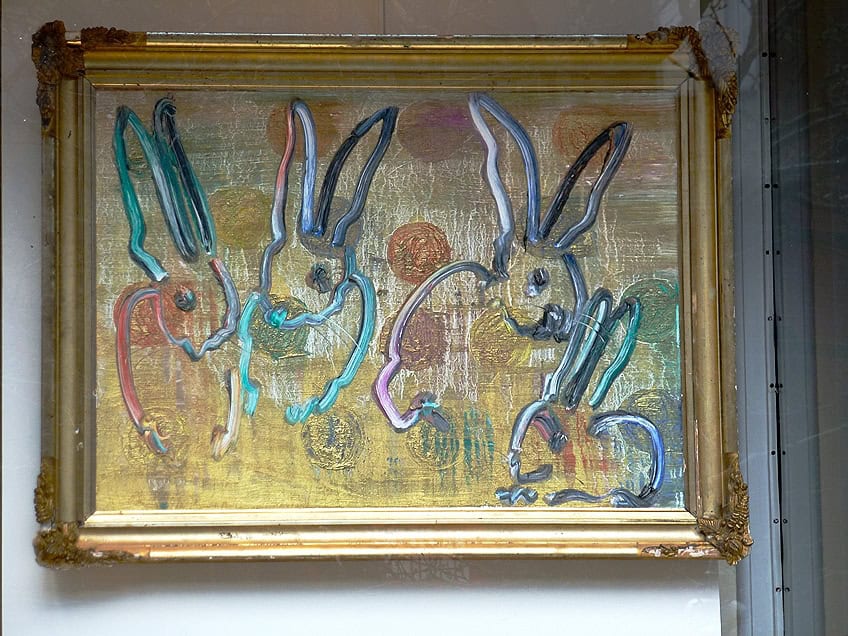
His work reflects a deep interest in the conservation of nature, as well as a revival of forgotten historic homes, which he has restored with the same meticulous attention to detail evident in his art. This dedication to preservation is equally evident in his large-scale sculptures and installations that bridge the gap between art and environmentalism. His contributions have not only enriched the art community but have also left a lasting impact on art enthusiasts and collectors. Slonem’s work can be found in over 250 museum collections globally, signifying the lasting value and influence of his artistic vision. The reader is invited to explore how Slonem’s life, career, and signature style have evolved, offering a rich tapestry of visual and conceptual experiences.
Early Years and Background
Hunt Slonem was born in Kittery, York County, Maine. As a child, he was heavily influenced by his father’s career as a Navy officer, which involved frequent relocations. These early experiences gave him a broad international perspective. During his youth, Slonem developed a keen interest in nature. He became fascinated by butterflies, exotic birds, and tropical plants, elements which later prominently featured in his artwork.
Growing up in a family that valued the arts, he had ample encouragement to pursue his creative inclinations.
Academic Pursuits at Tulane University
Slonem’s formal education in art began at the Skowhegan School of Painting and Sculpture in Maine, where he studied in 1972. This institution provided him with a foundational understanding of various artistic techniques and methodologies. Following this, Slonem attended Tulane University in New Orleans, Louisiana. He graduated in 1973 with a BA in Painting and Art History.

The vibrant cultural atmosphere of New Orleans, coupled with the university’s rigorous academic environment, significantly influenced his artistic development. The city’s rich history and diverse fauna were reflected in his later works, particularly his renowned series featuring butterflies and tropical birds. Slonem also had early professional experiences in Nicaragua, further enriching his artistic and cultural palette.
These academic and life experiences deeply influenced his distinct neo-expressionist style.
Artistic Career and Evolution
Hunt Slonem’s artistic journey is marked by significant milestones, including his initial breakthrough in New York City, development of distinctive themes, and the expansion into various mediums such as sculpture and printmaking.
Initial Breakthrough in New York
Hunt Slonem made his initial impact on the art scene in New York City during the early years of his career. After studying at Tulane University and the Skowhegan School of Painting and Sculpture, he moved to Manhattan. His solo show at the Fischbach Gallery in the 1970s set the stage for his rise in the art world. Exhibiting Neo-Expressionist works, he gained recognition for his unique style, which combined representational imagery with abstract elements.

Distinctive Themes and Subjects
Slonem is renowned for his recurring motifs of exotic birds, butterflies, and rabbits. These subjects have become synonymous with his name and are inspired by his personal aviary where he keeps numerous live birds. His works typically feature bold colors and textured surfaces, often reflecting a spiritual and nurturing connection with nature.
This thematic consistency has become a hallmark of his paintings, making his pieces easily recognizable and widely appreciated.
Expansion into Sculpture and Printmaking
In addition to painting, Slonem has successfully expanded into sculpture and printmaking. His sculptures include various iterations of his beloved subjects, crafted in materials such as metallics and resins. He also explored printmaking, developing intricate designs on different surfaces including wallpapers and fabrics. This diversification has allowed him to reach a broader audience and showcase his versatility as an artist, further cementing his standing in the contemporary art world.
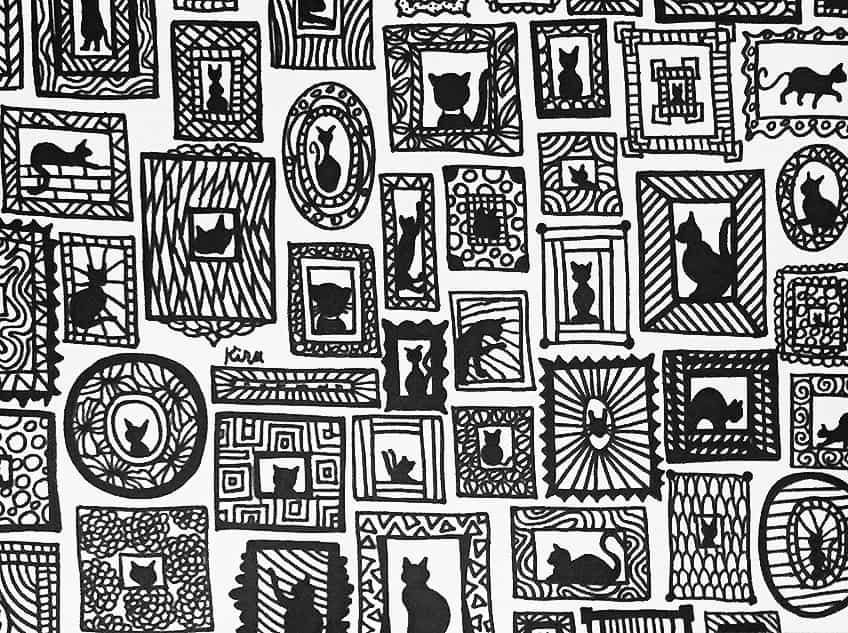 A wall of cat portraits inspired by Hunt Slonem; Yvette Wohn, CC BY-NC 2.0, via Flickr
A wall of cat portraits inspired by Hunt Slonem; Yvette Wohn, CC BY-NC 2.0, via Flickr
Signature Style and Iconic Motifs
Hunt Slonem is celebrated for his distinct neo-expressionist style, marked by his consistent use of recurring natural motifs and vibrant palettes. His work prominently features fauna, especially bunnies, butterflies, and tropical birds.
The Fascination With Fauna
Slonem’s affinity for animals prominently appears in his art. He frequently depicts bunnies, butterflies, and tropical birds. These subjects are not chosen at random; each signifies a deeper connection to nature and spirit. Bunnies are a particular fascination. He draws and paints them repeatedly, embodying both simplicity and complexity. Tropical birds, inspired by his personal aviary, showcase vivid colors and lively expressions.
Butterflies, with their transformative symbolism, add an ethereal quality.
Explorations of Color and Repetition
Color and repetition are central to Slonem’s aesthetic. His use of vibrant, often contrasting colors creates a lively visual impact. Repetition of motifs like bunnies or butterflies emphasizes their significance and creates rhythmic patterns. Slonem employs a unique technique where he layers paint and then scrapes it away. This process adds texture and depth. The repeated motifs establish a visual identity, making his works instantly recognizable. His color explorations evoke emotional responses while maintaining a cohesive harmony.
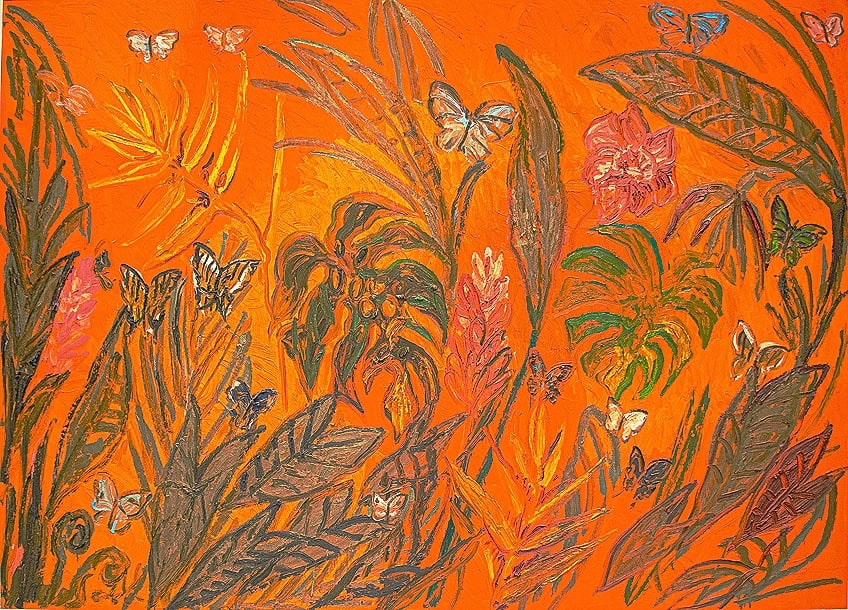
Legacy and Influence
Hunt Slonem’s legacy is marked by his presence in major museum collections, his significant impact on contemporary art, and his contributions to historic preservation.
Presence in Museums and Permanent Collections
Slonem’s works are housed in prestigious institutions such as the Solomon R. Guggenheim Museum and the Metropolitan Museum of Art. His art is also featured in the New Orleans Museum of Art, reflecting a deep connection to Louisiana. Museums around the world, including the Moscow Museum of Modern Art, showcase his vibrant paintings, solidifying his global influence. Many of his pieces reside in permanent collections, ensuring his art’s enduring presence.
Impact on the Contemporary Arts Scene
Slonem’s unique style, characterized by colorful depictions of butterflies, bunnies, and birds, has captivated the contemporary art market. He is a major figure in the Neo-Expressionist movement, with his work drawing critical acclaim and commercial success. His influence extends through various mediums, including painting, printmaking, and sculpture.
The National Endowment for the Arts recognized his contributions, highlighting his innovative approach and distinct artistic voice.
Involvement in Restoration and Preservation
Beyond his artistic endeavors, Slonem is noted for his passion for restoring historic homes. He has dedicated time and resources to preserving properties with historical significance, reflecting his commitment to cultural heritage. His efforts include work with the Cultural Counsel Foundation’s Artist Project, promoting the intersection of art and preservation. Slonem’s involvement ensures that history and art coexist, enriching the cultural landscape.

Hunt Slonem’s remarkable body of work continues to enchant and inspire audiences with its vibrant celebration of life and nature. His unique approach to painting, characterized by meticulous repetition and rich textural depth, creates a distinctive visual language that bridges the gap between abstraction and representation. Through his captivating portrayals of birds, butterflies, and bunnies, Slonem invites viewers into a fantastical world teeming with color and energy. As a prolific artist with a profound connection to his subjects, Slonem’s contributions to contemporary art are both significant and enduring, ensuring his place in the annals of art history.
Frequently Asked Questions
What Themes Are Commonly Explored in Hunt Slonem’s Artwork?
Hunt Slonem frequently explores themes of nature, focusing particularly on butterflies, tropical birds, and rabbits. His fascination with these subjects stems from his personal experiences and his aviary, where he keeps many live birds. This recurrent imagery has become iconic in his work.
How Has Hunt Slonem’s Painting Style Evolved Over the Years?
Slonem’s painting style has evolved from early experimentations with abstract forms to his distinctive Neo-Expressionist approach. Over the years, he has developed a signature technique involving repetitive patterns and textured impasto. His current works often include metallics, resins, and lightboxes, adding a modern twist to his traditional subjects.
How Does Hunt Slonem’s Use of Color Contribute to the Aesthetic of His Pieces?
Hunt Slonem is renowned for his vibrant and vivid use of color. His palette often features bold, contrasting hues that create a lively and dynamic visual impact. This use of color not only draws attention but also enhances the whimsical and fantastical elements of his work, making each piece visually striking.
What Influence Has Hunt Slonem Had on Contemporary Art?
Hunt Slonem has had a profound influence on contemporary art, particularly through his innovative techniques and memorable motifs. His ability to blend traditional subjects with modern materials and methods has inspired many artists. Additionally, his works are widely included in major museum collections, reinforcing his significance in the art world.
Isabella studied at the University of Cape Town in South Africa and graduated with a Bachelor of Arts majoring in English Literature & Language and Psychology. Throughout her undergraduate years, she took Art History as an additional subject and absolutely loved it. Building on from her art history knowledge that began in high school, art has always been a particular area of fascination for her. From learning about artworks previously unknown to her, or sharpening her existing understanding of specific works, the ability to continue learning within this interesting sphere excites her greatly.
Her focal points of interest in art history encompass profiling specific artists and art movements, as it is these areas where she is able to really dig deep into the rich narrative of the art world. Additionally, she particularly enjoys exploring the different artistic styles of the 20th century, as well as the important impact that female artists have had on the development of art history.
Learn more about Isabella Meyer and the Art in Context Team.
Cite this Article
Isabella, Meyer, “Hunt Slonem – A Kaleidoscope of Color.” Art in Context. July 18, 2024. URL: https://artincontext.org/hunt-slonem/
Meyer, I. (2024, 18 July). Hunt Slonem – A Kaleidoscope of Color. Art in Context. https://artincontext.org/hunt-slonem/
Meyer, Isabella. “Hunt Slonem – A Kaleidoscope of Color.” Art in Context, July 18, 2024. https://artincontext.org/hunt-slonem/.




